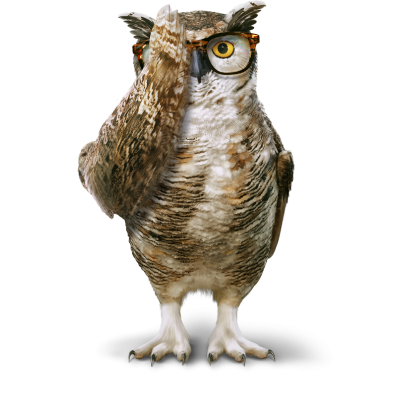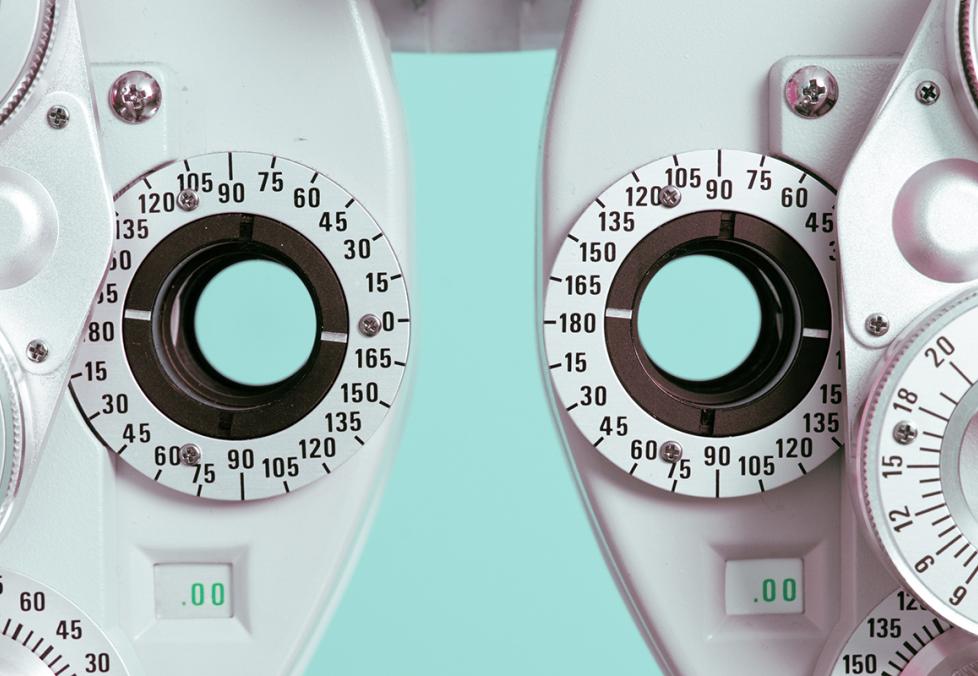
Two pairs and a free, quality eye exam for just $79.95
Everything you need to know to take care of your eyes — for life.
Contact lens wearers need both a routine eye exam and a contact lens exam to see their best. Here's what sets each one apart from the other.

When your world starts to look blurry, you head to the eye doctor for an eye exam. But did you know there are two different types of eye exams? The one you get will vary depending on whether you want to wear contact lenses or eyeglasses.
That’s because a contact lens prescription is different from an eyeglasses prescription. While eyeglasses sit on the bridge of your nose, contact lenses sit directly on your eyes. There are extra steps in a contact lens exam to make sure you get the right fit and prescription.
If you plan on wearing contact lenses, let the America’s Best associate know when you schedule your appointment. Here’s how contact lens exams differ from regular eye exams, and what you can expect at your appointment.
Eye checkups are an essential part of your health care routine. Find an exam time that fits your schedule!
Some parts of a contact lens exam may feel familiar if you’ve been fitted for eyeglasses. But some parts of the exam are different.
Here’s what happens during a typical contact lens exam:
Vision test. Your eye doctor will test how well you can see. This is the first step in figuring out your contact lens prescription.
Eye measurements. Your optometrist will measure the size and shape of the structures within your eyes. This includes your corneas, pupils, and irises.
They’ll also measure the curvature of your cornea to make sure your contacts will sit properly on your eye. This step is key, since ill-fitting contacts are uncomfortable and may make it hard to see clearly.
Tear film evaluation. Your eye doctor will check to see if your eyes make enough tears to keep your contact lenses moist.
After your eye doctor has finished the tests and measurements, they’ll recommend one or two different types of contact lenses that would be best for you.
There are many different types and brands of contact lenses. Depending on your vision needs and lifestyle, some may be better suited to you than others.
For example, people with astigmatism have an unevenly curved cornea (it’s more oval than round) and may need particular types of contact lenses.
And if you have presbyopia (an inevitable part of aging where you gradually lose the ability to focus on nearby objects), you may be a good candidate for monovision or multifocal contact lenses.
For most people, however, the choices will come down to:
Your eye doctor can walk you through the pros and cons of each.
Yes! Diagnostic lenses are included with every contact lens exam at America’s Best. Most diagnostic pairs are handed out the same day as your exam. But some specialty lenses (toric, bifocal, colored, etc.) will have to be ordered.
Wearing these lenses for a short period of time — usually a week or so — will help the eye doctor decide if contact lenses are right for you.

Two pairs and a free, quality eye exam for just $79.95
Education is another key part of a contact lens exam — especially for new wearers.
One of our America’s Best opticians will show you how to properly put in your diagnostic lenses and take them out. You’ll have a chance to practice a few times. In fact, we don’t want you to leave without feeling confident about this step.
The optician will also teach you how to properly care for your contact lenses.
Press play to learn about the “taco test” — it’s a fool-proof way to know if you’re putting your contact lenses in correctly:
Before you leave the office, you’ll schedule a follow-up appointment.
Your eye doctor can’t order your contacts until you return for this important second visit. They’ll check the fit and prescription of your contact lenses to make sure they’re right for you.
Your optometrist will also make sure the contacts feel comfortable in your eyes. The diagnostic pair may have felt comfortable in the office during your first visit, but it may feel different after a few hours or days of wear.
If the contact lenses don’t feel good, your doctor will go over different brands and types of lenses you can try next.
Important tip: The follow-up exam (or exams, if you end up needing more than one) is included in the contact lens exam fee at America’s Best. Just make sure it is within 45 days of the original exam date.
It’s a good idea to go for a contact lens exam once a year. Contacts are federally regulated because they are considered medical devices. Because of these regulations, contact prescriptions usually expire yearly.
What’s more, contact lenses rest on your cornea. That’s the sensitive outer layer of your eye. If your contacts don’t fit right or you're having issues with the lens material, it could cause problems for your eye health. That’s why an annual contact lens exam is an important part of your eye care routine.
A contact lens exam is $99 and is not included with the purchase of any product. This exam is more expensive than comprehensive eye exams because more testing is needed to fit you for contacts.
If you are concerned about the cost of the contact lens exam, we highly recommend becoming an Eyecare Club member. A 3-year membership costs $109 and includes contact lens exams (up to 2 per year) and 10% off contact lenses, glasses, and accessories. Learn more about our Eyecare Club.
Recommended reading: America’s Best Guide to Contact Lenses